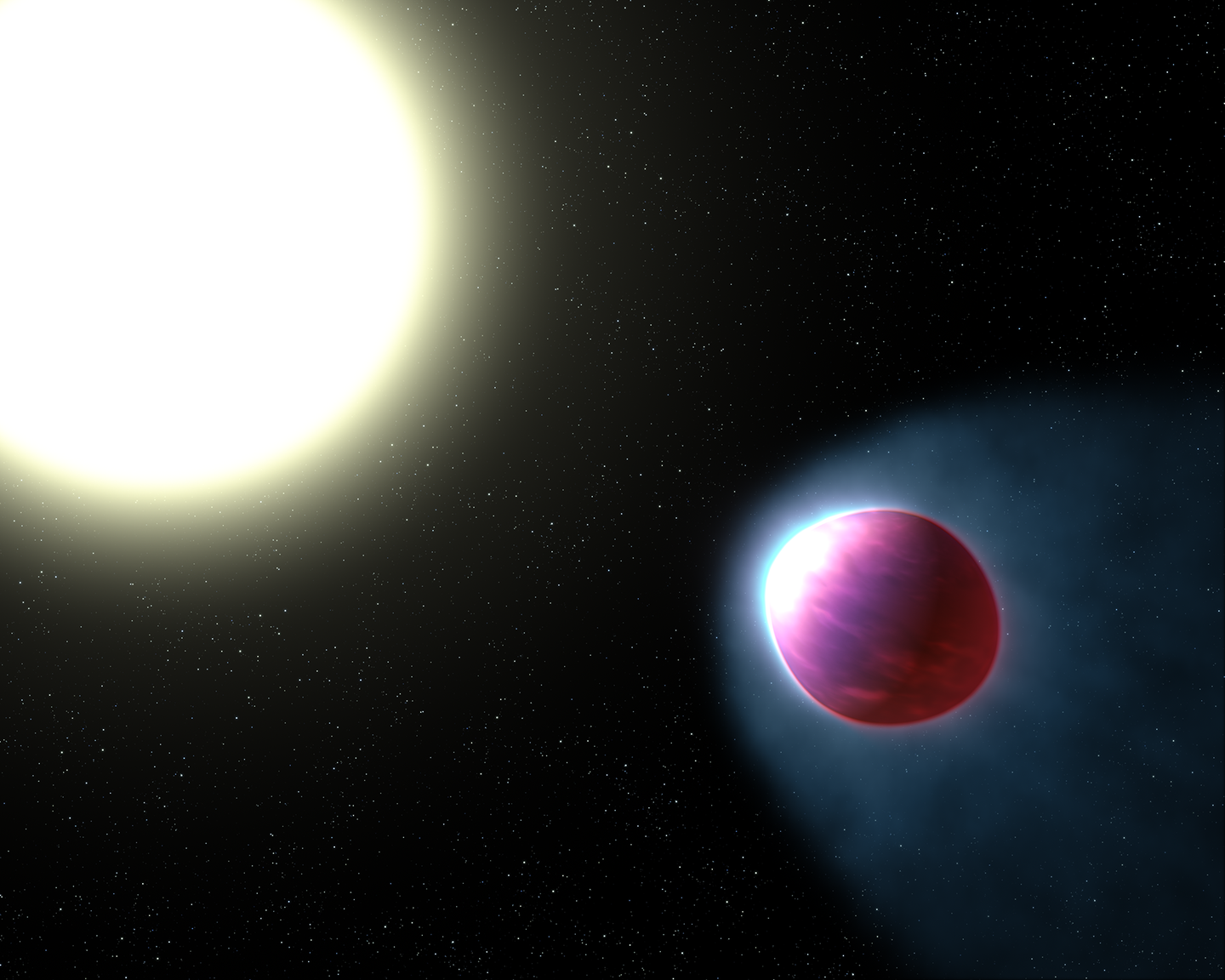This giant exoplanet has a glowing atmosphere
You can't see it—but Hubble can.

Picture Jupiter, the gas giant. Now inflate it to over five times its size. Throw in a sun close enough that it can heat the planet’s atmospheric surface to 4,600 degrees Fahrenheit.
Meet WASP-121b, known as a “hot Jupiter.” It is an exoplanet—a planet outside our solar system—900 light-years away from Earth that shares a surprising feature with our home planet: a stratosphere.
In a study published this week in Nature, researchers used the Hubble Space Telescope to visualize WASP-121b’s stratosphere, an outer atmospheric layer that has never been convincingly shown in planets outside our solar system before. To give you some context of where its located, there’s a good chance you’ve visited the stratosphere: when you’re flying in a plane, that is. On Earth, the stratosphere is located above the troposphere (where we live) and below the outermost layers of our atmosphere. The defining characteristic of the stratosphere is that the temperature gets warmer as you move outward.
“There were theoretical reasons to expect this would be happening in exoplanets’ atmospheres,” says Thomas Evans, first author of the study and a research fellow at the University of Exeter. “But these exoplanets are distant, far away, exotic objects. It’s always difficult to predict what their atmospheres will really be like.”
To understand how WASP-121b’s atmosphere behaves, the scientists looked at the infrared light emitted by water molecules in the exoplanet’s atmosphere. This release of radiation can happen when the water molecules are repeatedly absorbing and releasing a lot of energy—if they are, for example, in very hot surroundings. Humans can’t see infrared light because our eyes can only detect a narrow range of light waves. But that’s not a problem for the Hubble Space Telescope.
And what Hubble captured was remarkable: The water molecules were glowing. Like a burning candle or the pulsing of hot coals, the glowing upper atmosphere meant that there was a lot of energy or heat being released instead of absorbed. This indicates that WASP-121b has a stratosphere that gets warmer further from the planet’s surface. Based on those emissions, the temperature increases by 1,000 degrees Fahrenheit across the span of the stratosphere.
But if you think about it, that doesn’t entirely make sense because, at almost -500 degrees Fahrenheit, space is very, very cold; you’d expect that as you shoot out toward that frigid expanse, you would get colder. On Earth, our stratosphere has an inverted temperature gradient because of ozone within the atmospheric layer. The ozone heats up the outer stratosphere by absorbing the Sun’s UV radiation. But that’s Earth, not a distant “hot Jupiter.” So why does WASP-121b have a stratosphere like our much smaller, rockier planet?
That’s a question that the researchers are still trying to answer. They think compounds in WASP-121b’s atmosphere—titanium oxide and vanadium oxide—could be keeping its outer layers toasty, but it will take more studies to figure that out.
Although understanding exoplanet atmospheres won’t necessarily help us understand our own solar system, the researchers are thinking bigger than that. The technology isn’t quite there yet, but Evans hopes that scientists will one day be able to study the atmospheres of smaller exoplanets to figure out if they could support life. Focusing on planets in our own solar system limits the scope of what we can learn, Evans says.
“There is a vast spectrum of planet atmospheres,” Evans says. “In order to develop a more complete understanding, we need to explore this vast population of exoplanets.”
And it’s the perfect time for this research, with the newest Hubble-spin-off ready for launch next year: We’re ready for you, James Webb Space Telescope.